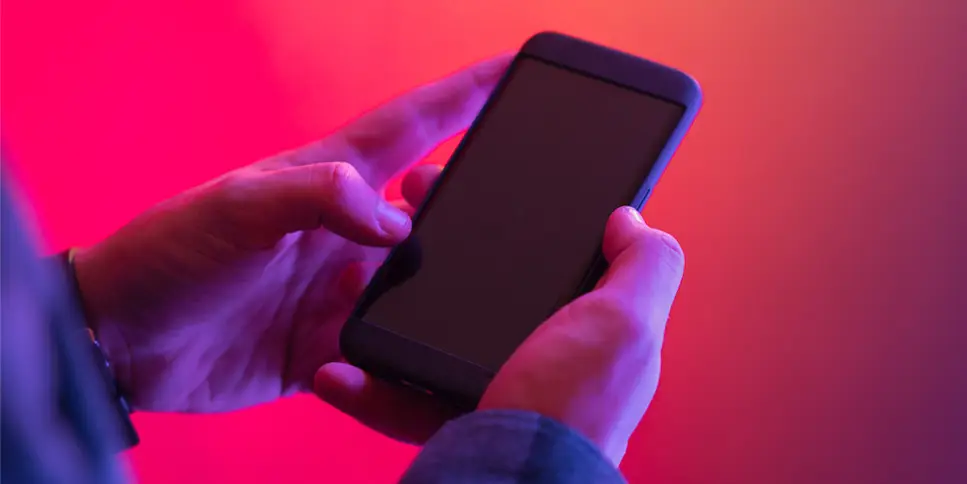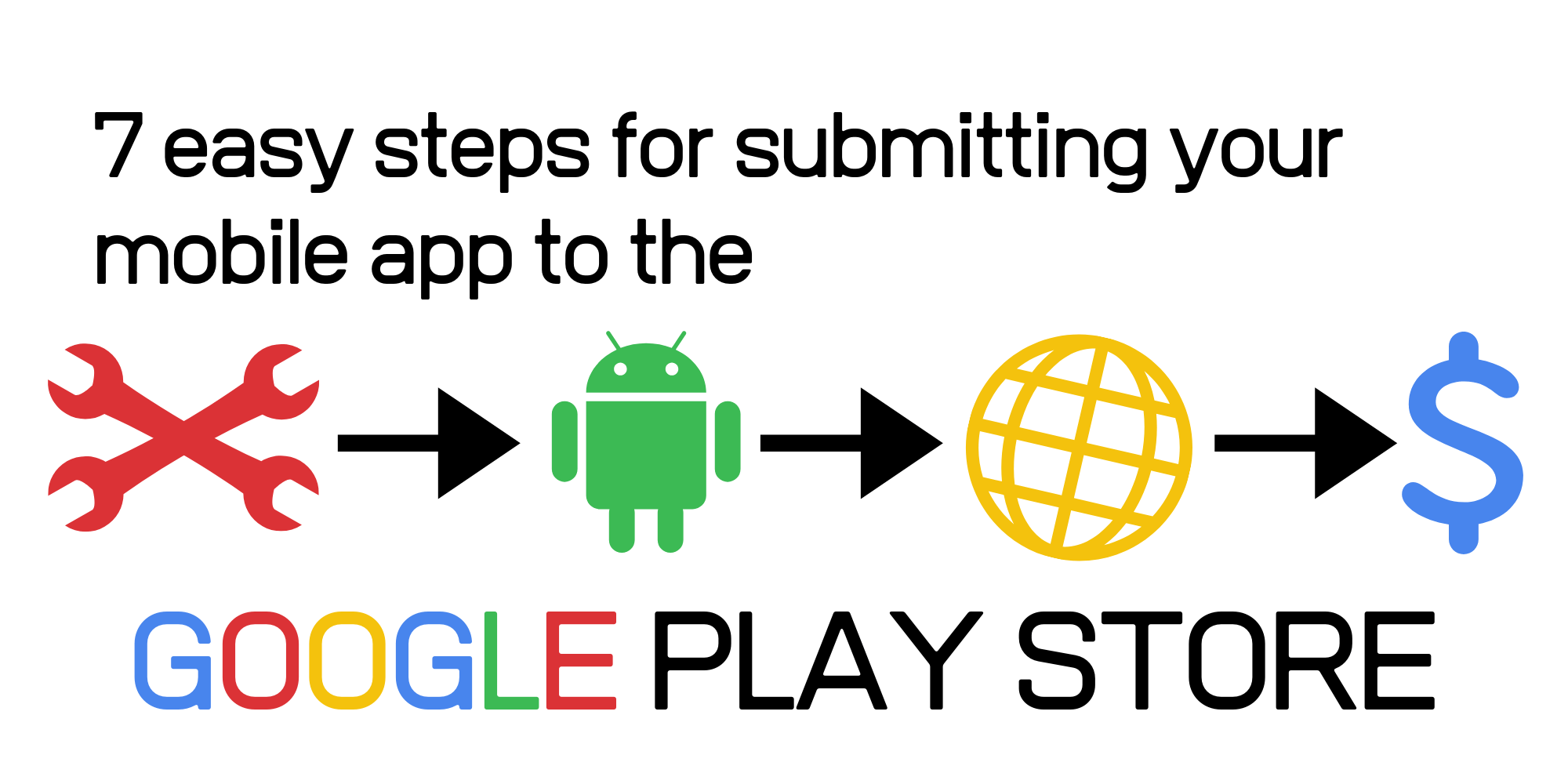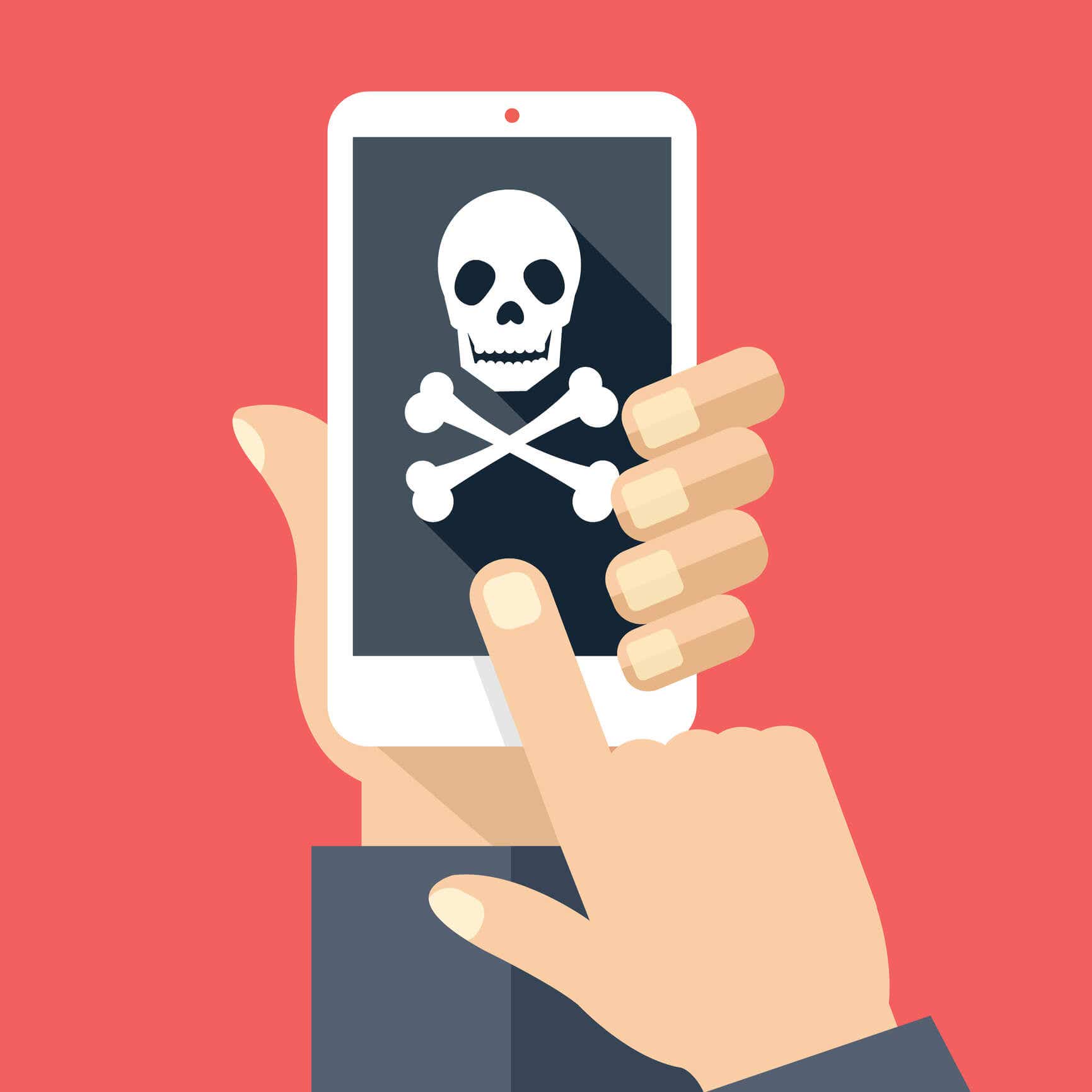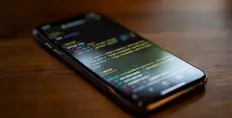Chat med Ava - din KI-forretningskonsulent
Hei, jeg er Ava, din KI-guide for å superlade virksomheten din!
Enten du allerede driver en virksomhet eller drømmer om å starte en, er jeg her for å gjøre visjonen din til virkelighet ved hjelp av KI-drevne frilansere. Del forretningsmålene dine med meg, og sammen lager vi et prosjekt som våre talentfulle frilansere kan by på. La oss gjøre visjonen din til virkelighet!
Jeg har en virksomhet
Jeg starter en bedrift
Noe gikk galt mens du sendte samtalen til e-posten din. Prøv igjen senere.
Du kan bare lagre samtalen en gang i timen. Prøv igjen senere.
Samtalen din er for kort. Fortsett å chatte med Ava for å aktivere lagring.
The ultimate guide to building a mobile app
Got a great idea for an app? Need a new way to grow your business? We tell you everything you need to know about building a mobile app in 2020.
26. apr. 2019 • 16 minutt lesetid
Oppdatert 14. okt. 2022 av Closed User
F
Closed User
Kopiering til utklippstavlen mislyktes. Prøv igjen etter å ha justert tillatelsene dine.
Kopiert til utklippstavlen.

Mobile apps are a powerful tool to market and grow your business. Find out why you need one, how to build one and how much it’ll cost.
Mobile apps are big business. According to Statista , there were 197 billion mobile app downloads in 2017. It’s estimated that 81% of smartphone users have the Facebook app on their phones. And research from Flurry Analytics shows that Americans spend an average of five hours a day on their smartphone, and 92% of this time is spent using mobile apps.
If you're wondering how a mobile app might take your business to the next level, read on to find out.
How much does it cost to develop a mobile app?
The cost to hire an app developer will depend entirely on the solution you choose. We've laid out the options in the table below. As you can see, freelancers can significantly reduce the cost of getting your app off the ground. By comparison, Clutch estimates the average cost of an agency-designed app ranges between $30,000 USD and $700,000 USD, with a median cost of $171,450 USD.
Solution | Description | Average cost |
|---|---|---|
Solution | Description | Average cost |
Solution | Description | Average cost |
Solution | Description | Average cost |
Solution | Description | Average cost |
Featured Work in Mobile App Development

Prayer Times App for Asian Countries
by eclairios

Pal Market App
by aarvtech

Yellow Mobile App
by zikoblade

Glam Crew App
by aarvtech
5 reasons why your business needs a mobile app
Now that you know the cost of a mobile app, let's look at what kind of return you can expect on that investment.
Mobile apps aren't just for big businesses. Whether you're a small business, a startup with big plans or an established company, a mobile app can deliver you stickier customers, better sales volumes and useful insights into how your company is operating.
How do mobile apps help small business grow?
You can increase sales
In 2018, retail sales over a mobile platform crossed $600 billion USD . Considering 85% of consumers say they prefer an app over a mobile-friendly website, mobile apps are an enormous sales channel.
A mobile app gives you a direct sales channel to your customers. You can use push notifications, coupon codes and special promotions to market your products or services to your customers wherever they are. Moreover, a purchasing portal and payments system means you've made it easier and more convenient for your customers to buy from you.
Finally, a mobile app means your local business can go global. You're no longer constrained by geography and can reach customers anywhere.
You can build brand loyalty
Living on your customers' phones means you're always top of mind. You can connect with your customers 24/7. It also helps differentiate you from your competition to better position your brand. A recent survey by Clutch found that 58% of small businesses don't have a mobile app and only 30% plan to build one in the future. Offering a mobile app to your customers puts you in a rare category.
You can communicate with your customers
A mobile app can help you connect with your customers, not only for marketing but also to provide support. You can include an FAQ section, link directly to your support phone number or even build in a live chat window to immediately address customer needs.
But a mobile app also provides a channel for immediate marketing communication. You can send push notifications for special promotions, recent developments or reminders. While you don't want to bombard your customers with constant communication, push notifications are a powerful tool for remaining in contact. Data from Localytics shows 65% of push-enabled users will return to an app within 30 days of downloading it. This is crucial when the average app gets deleted just 5.8 days after its last use.
You can streamline your business processes
A well-built app can help your business run smoother. If you have a payments platform, you can take the pain out of invoicing. If you're running a retail store, a mobile app can help you keep track of your inventory. Restaurateurs can use a mobile app for bookings to help them better plan staffing. No matter what business you're in, a well-built mobile app can help it run more efficiently.
Freelance Mobile App Development Experts


PHP
Website Design
Graphic Design
Mobile App Development
iPhone


PHP
C Programming
Java
JSP
JavaScript


Python
WordPress
Magento
Drupal
Laravel


PHP
ASP
Ruby on Rails
Android
Game Design
You can learn valuable info about your customers
Apps are great for collecting data about your customers. This doesn't mean you have to spy on your clients. Rather, you can gain valuable insight about customer behavior. You'll be able to see at a glance the number of customers using your app, where they've come from and the products or services they engage with most.
You can expand this to collect demographic info on app users to get a better idea of who your customers are. You can survey customers to find out their age, their income, their interests and other retailers and services they use. This can be a wellspring of information to help your marketing efforts.
Should I build an app or a mobile website?
The question of whether to build an app or a mobile website is a tricky one. A mobile-friendly website is easier to build, but statistics point to the strong return on investment for mobile apps.
The average adult in the US spends 2 hours and 43 minutes per day using mobile apps , versus just 27 minutes browsing the mobile web. Obviously, consumers prefer apps.
There's plenty of evidence that apps are better for sales as well. E-commerce apps are more effective at closing sales than mobile websites. A study by Criteo found consumers view 4.2 times more products per session on mobile apps versus mobile websites. Conversions on mobile apps are also 3 times higher than on mobile web, and 1.5 times higher than on desktop.
Featured Work in Mobile App Development
iTouch iPay App
by eclairios

App Concept for Dental Clinic
by theislanders

UI/UX Mobile Apps
by stdyka

Travel App - Hullortravel.com
by gobyweb2
How do I create a mobile app for my business, and what is the process of mobile app development?
If you've decided you need an app, there's a process you should follow to make your app a reality. We've broken it down into 11 steps.
1. Ideation
This is the initial concept for your app. It's likely that if you're reading this, you've already got an idea for an app. If not, check out our guide on generating business ideas and apply some of the tips to your mobile app ideation process.
Once you have an idea, though, you should think through what kinds of features will help your app address its target market. If your app is solving a problem for users, what features make the most sense as a means to solving that problem? If it's providing entertainment, what features will make it most engaging for users? Sketch out some ideas and a list of features.
2. Validate demand
Once you have an idea and list of features, it's time to figure out if there's a market for your app. You'll do this by determining your total addressable market (TAM) and then estimating the percentage of that market your app could appeal to.
For example, let's say your idea is a mobile app for dating. Your total addressable market would be the number of single people within the geographic market you're targeting.
Once you've determined the total addressable market, you need to look at existing solutions. Using our dating app example, you could look at apps like Tinder and Bumble. Are there user problems these apps aren't addressing? What percentage of the market is likely to have these unaddressed problems? Is it a large enough market to make demand for your app viable?
After you've determined this, look back at your list of proposed features. Highlight the ones that specifically address user problems that aren't being addressed by existing solutions. Then think of the features that users expect from an app like yours (for example, the ability to like, match and chat with other users). Narrow your list down to all the features that your target user would want.
3. Determine your MVP features
Now it's time to narrow that features list even further by determining a set of MVP features. Your MVP is your minimum viable product. MVP features are the minimum set of features your app needs to launch with to function and fulfill its use case for its target market. These are the core features that make your app attractive to users and set it apart from its competitors. Coincidentally, they're also the only features you should focus on building into your app's launch version.
It's tempting to consider every feature you've dreamt up an absolute non-negotiable. But it's important to be brutal in trimming your app down to an MVP for launch. Not only will this ensure you can get your app to market quickly. It also avoids "feature bloat," which is jamming your app full of features that users won't end up utilizing and that will make your app slow and difficult to navigate.
To learn more about developing a great digital product, make sure to read our complete guide on pulling off the perfect digital product launch.
4. Wireframe
For wireframing, you'll likely want to hire a graphic designer rather than an app developer. You'll want to make sure your designer is an expert at UI (user interface) and UX (user experience) . This will ensure they build a wireframe that results in a completed app that's easy for users to navigate.
5. Determine your platform and tech
Next you'll need to decide what platform you want to use to build your app. This isn't just a choice between iOS and Android. You'll need to decide what kind of app you want to build: native, web or hybrid.
Native apps
A native app is an app built to work on the user's smartphone or tablet. This will be an iOS or Android app, or perhaps Amazon Fire.
Native apps are built specifically for a device and installed directly on the device itself. They're downloaded from an app store such as the Apple App Store or the Google Play store.
The benefit of native apps is they can often be used offline. They also allow the app to directly access features of the device, such as the camera or geolocation features. They tend to perform faster, as they store their information on the device.
The downside of native apps is that they're much more costly to develop and maintain. They also rely on your app being approved by the app store platform you deploy it on. While the Google Play store has a fairly simple approval process, the Apple App Store can take more time.
Web apps
Web apps use the device's internet browser. Users don't have to download web apps and can access them from any device. They also don't have to go through a curation process in an app store. They're cheaper to build and easier to maintain than native apps.
The downside of web apps is that they can't be found on an app store. They rely on users finding your web app through an internet search. They also can't be used offline, and performance can vary dependent on the browser the user chooses. Web apps can't access a device's features either. Perhaps the biggest drawback is that web apps don't live on the user's device, meaning they don't put your brand top of mind.
Hybrid apps
A hybrid app combines elements of native and web apps. Hybrid apps use the device's browser engine, not the browser itself, to access online features, but can function whether or not the device is connected to the internet. They can also access the device's hardware, such as the camera or accelerometer. Hybrid apps also tend to be less costly to develop than native apps.
The disadvantage of hybrid apps is that they can be less stable than native apps. Hybrid apps use a component called webview to access online features, and webview tends to not perform as well as online features in native apps. It can also be difficult to develop hybrid apps to function the same across different platforms.
Which should I choose?
Your choice will come down to what you want your app to achieve. You'll have to weigh up the performance of your mobile app against the cost of development. Native apps are the most stable and offer the most functionality, but are also the costliest to develop.
6. Prototype
Your prototype is the point at which you'll want to hire a mobile app developer. Depending on the platform you're targeting, you may want to hire a specialist in iOS development , Android development or a developer who's skilled at both.
Your prototype will be a working version of your wireframe. It's there to provide a proof of concept. You can use your prototype for user testing. Let friends, family and even strangers in your target market test the prototype and gather their feedback.
7. Design mock-up
This stage is where a graphic designer takes your wireframes and prototype and brings them to life. Once again, you'll want a graphic designer who can not only make your app look beautiful, but who understands UI and UX principles.
You can also get your graphic designer to work on some of the elements you'll need to submit your app to the Apple App Store and Google Play Store. This includes a feature image and an app icon.
8. Development
Once you have your mock-up, your developer can code the fully working version of your app. There are a variety of tools they might use to do this. Some of the common skills you might be looking for in a developer would be tools such as:
They may also be proficient in various programming languages, including:
9. Test and debug
After your app developer has coded your mobile app and applied the design from your graphic designer, they'll put it through its paces by testing it. They'll make sure it works on a variety of different devices and screen formats, and a variety of mobile OS versions. They'll also test it for various connection speeds.
The testing process is the chance to make sure all the features in your app work as expected, and work in a variety of situations. The process should reveal any bugs plaguing your app. This is the developer's chance to work out these bugs.
10. Deploy
Once your mobile app has been tested and debugged, it's time to deploy it to app marketplaces. Depending on the platform you've chosen, you may be publishing it on the Apple App Store, the Google Play Store or both. Fortunately, we've written in-depth guides on how to publish your app on both the Apple App Store and the Google Play Store .
11. Add additional features
Remember all those beautiful features you dreamt up that we cruelly forced you to abandon earlier? Don't despair! You can add additional features to your app as you gather user feedback. If you're able to validate demand for a certain feature among actual users of your app, and if it's technically feasible, you can always add the feature into a future release. This is why you should maintain a relationship with the mobile app developer you hire. They can help with ongoing maintenance, as well as build new functionality for you in the future.

I have a great idea for an app. How do I get it made?
You've been converted to the idea that mobile apps are a great source of business. You've decided what kind of app you want developed and what you want it to do. Now you just have to figure out how you're going to get it built.
Unless you're an expert coder, chances are you're going to need some help making your mobile app a reality. There are a range of solutions to consider for hiring a mobile app developer.
You could hire an external agency to develop your app. Agencies will be able to work with you from the initial concept of your app all the way through to deploying the product on platforms such as Apple's App Store and the Google Play store. However, you can expect to pay a high price for agency-based mobile app developers.
You could hire a full-time app developer for your staff. This gives you the benefit of constant oversight of the project. However, you'll need to weigh up whether or not you'll need the developer's skills on an ongoing basis after your app is finished. Also, it may be difficult to find a single developer who's skilled in graphic design, front-end coding and back-end coding.
There are a variety of software programs that allow you to build an app with no coding knowledge. They use pre-made templates and easy interfaces to help you design your app. Most of these software platforms offer a limited range of app functionality, and many insert their branding and run display ads on your app unless you pay for a premium version.
A freelance app developer is a lower-cost solution than hiring an agency or an in-house staff member. Because freelancers work all over the world, you're likely to find a skilled developer for a fraction of the price of an agency or in-house staff member. Freelance mobile app developers can work with you through the entire app development process, from concept through to deployment.
Freelance Mobile App Development Experts


PHP
ASP
C Programming
Java
JavaScript


PHP
Java
JavaScript
XML
Website Design


PHP
JavaScript
.NET
Website Design
Graphic Design


PHP
Java
JavaScript
Website Design
Graphic Design
Why should I hire a freelancer to design my mobile app?
A freelancer can be a smart solution if you're looking to design a mobile app without spending six figures. In addition to cost, freelancers can provide other benefits.
While hiring an agency or in-house developer can deliver you skilled work in general mobile app development, hiring a freelancer can help you find a developer with the specialized experience you're looking for.
Are you developing a game? You can find freelancers who specialize in mobile game development. Building a retail portal? You can browse through portfolios of projects similar to yours. No matter what kind of app you're building you can find a freelancer who's an expert in your proposed project.
Freelancers are highly motivated to deliver projects quickly. Hitting deadlines means they can take on more work, receive higher ratings from employers and build their profile and portfolio. They rely on favorable reviews to get future work, so timeliness is prioritized.
As you can see in the table above, a freelance mobile app developer can complete a project for a fraction of the price of an agency or in-house developer. Because freelancers rely on employer ratings and are competing for work with other freelancers, they're motivated to deliver quality projects at competitive rates.
How do I find the best app developer?
You can click the button below to post a new project. Make sure to describe in detail what you're looking to achieve, the problems you want your app to solve, the functionality you need and the platforms where you want it deployed. You should start receiving bids on your project within minutes. Once you see a bid that suits your needs, simply accept the bid and begin communicating with your mobile app developer.
Alternatively, if you've seen a project in the showcase above that's similar to the one you want done, click through to contact the freelancer. Or, if you've seen a showcased freelancer who has the skills you're looking for, click through to contact them.
Before you contact a developer or post a project, you'll need to think about the information they'll need to complete the project and include this information in your job posting. Specifically, consider:
You'll likely receive bids from several freelancers once you post your project. Shortlist the candidates who best suit your needs and budget, and ask them about:
Freelance Mobile App Development Experts


PHP
JavaScript
XML
AJAX
Shopping Carts


PHP
C Programming
Adobe Flash
Visual Basic
Graphic Design


PHP
C Programming
Java
JavaScript
.NET


PHP
Java
JavaScript
.NET
Website Design
Frequently asked questions
How much does it cost to build an app?
Clutch estimates the average cost of an agency-designed mobile app ranges between $30,000 USD and $700,000 USD, with a median cost of $171,450 USD.
How much does it cost to hire an app developer?
The average salary for mobile app developers, per PayScale, is $68,478 USD per year . By comparison, the average mobile app development project on Freelancer.com is completed for $543 USD .
What programming language is best to use for mobile apps?
A variety of languages can be used to build mobile apps, but some of the most popular mobile app development languages are:
Can I build a mobile app if I don't know how to code?
Yes. There are a variety of Software as a Service (SaaS) platforms that will let you build an app with little to no coding. These platforms are great if you're building a simple app, but they offer limited functionality and you often have to pay extra to remove their branding and ads. The top SaaS platforms we inspected range in price from $99 USD per year to $180 USD per month .
How do free apps make money?
Free mobile apps can make money in a variety of ways. One model is the freemium model , which offers a free download but charges for premium in-app content. Another way to monetize a free app is through advertisements. You can even combine the freemium model with the display ad model, offering a free version with ads and allowing users to pay for an ad-free version.
Fortell oss hva du trenger å få gjort
Skriv inn prosjektnavnet ditt
Relaterte historier
Snakk med en av våre tekniske co-piloter for å hjelpe deg med prosjektet ditt
Anbefalte artikler bare for deg

Finished building your shiny new app but not sure how to submit it to the Apple App Store? Follow our step-by-step guide to make sure it's done right.
6 min read

Not sure how to submit your new app to the Google Play store? Follow our tutorial to make sure you do it correctly the first time every time.
7 min read

Not all mobile apps are crowned with the glory of success, some fail miserably. Avoid failure by learning from the top 5 mobile app failures.
8 min read

If you want more people to download your app you need great reviews. Follow our guide to learn what you should do to beef up your mobile app rating.
6 min read
Takk! Vi har sendt deg en lenke for at du skal kunne kreve din gratis kreditt.
Noe gikk galt. Vær så snill, prøv på nytt.
Forhåndsvisning innlasting
Tillatelse gitt for geolokalisering.
Påloggingsøkten din er utløpt og du har blitt logget ut. Logg på igjen.




